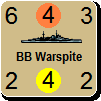warspite1
Posts: 41353
Joined: 2/2/2008
From: England
Status: offline

|
The Royal Navy. The submarine service.
The figure most often quoted for the number of submarines that the Royal Navy started the war with is 57 - the same number of submarines as the Kriegsmarine.
Whilst I can get to this number, there is a good degree of inconsistency between the various sources surrounding how many boats were in each flotilla and where they were stationed. The below represents my best guess but, in terms of flotilla make-up, may be out by the odd boat here and there. Some of these boats may also have been under refit (aside from the five mentioned below).
There were ten classes of boat still operational in September 1939, ranging from the twelve World War I vintage boats of the H and L-classes, to the latest T-class patrol submarines.
The older, single-hulled boats of the H and L-classes were transferred to training roles within the first two years of the outbreak of war. The O, P and R-classes were very similar to each other. These boats were large patrol vessels designed for duty in the Far East. Prone to leaks and engine problems, their WWII careers lasted only a year or so longer than their older stablemates – but not before two thirds of the boats were lost. The Porpoise/Grampus-class boats were built for specifically for minelaying duty. The River class were large boats designed to operate with the fleet. Their size made them ideal for supply missions – and two of the class were used in this role and played a part in the saving of Malta.
The last three classes - S, T and U - were instrumental in ensuring that RN submarine service ended the war with a fine record. Construction of the first boats of all three classes began before the war and, after ironing out of technical problems, continued to be built in modified forms once the war had started. The S-class was a class of 62 medium patrol submarines, designed to operate in the confined waters of the North Sea and Mediterranean. The larger T-class, was limited in size and speed by restrictions placed on submarine construction. However the boats, designed for long range patrol duty, proved to be an excellent addition to the service and, like the S-class, served with distinction in World War II – particularly in the Mediterranean. The small, single-hull U-class was actually not designed for combat operations – but was instead designed for training purposes. However, out of necessity, this class of small boats - three of which were ready at the outbreak of WWII – was also to serve the RN with distinction in the combat role.
September 1939
H-class (9) H 28, 31, 32, 33, 34, 43, 44, 49, 50
L-class (3) L 23, 26, 27
O-class (9) Oberon (ex-O1), Otway, Oxley, Odin, Olympus, Oprheus, Osiris, Oswald, Otus
P-class (5) Pandora (ex-Python), Parthian, Perseus, Phoenix, Proteus
R-class (4) Rainbow, Regent, Regulus, Rover
River-class (3) Thames, Severn, Clyde
Porpoise/Grampus-class (6) Porpoise, Grampus, Narwhal, Rorqual, Cachalot, Seal
S-class (12) Sturgeon, Swordfish, Seahorse, Starfish, Sealion, Shark, Salmon, Snapper, Seawolf, Spearfish, Sunfish, Sterlet
T-class (6) Triton, Thistle, Triumph
U-class (3) Undine, Unity, Ursula
The boats were split into flotillas of various sizes, according to importance of the theatre:
September 1939
1st Submarine Flotilla based in Malta (10 boats) Shark, Sealion, Osiris, Oswald, Otway, Cachalot, Porpoise, Salmon, Snapper, Narwhal
2nd Submarine Flotilla based in Dundee, Scotland (12) Seahorse, Starfish, Sturgeon, Swordfish, Spearfish, Sterlet, Seawolf, Sunfish, Triumph, Triton, Thistle, Oxley. Note the official historian Roskill states there were 14 boats in this flotilla.
4th Submarine Flotilla based in Hong Kong (15) Rorqual, Grampus, Regent, Rover, Parthian, Olympus, Proteus, Regulus, Rainbow, Phoenix, Perseus, Pandora, Orpheus, Odin, Otus.
East Indies Station (1) HMS Seal
5th (Training) Submarine Flotilla based in Portsmouth (11) L23, H28, H31, H33, H34, H43, H44, H49, H50, Oberon, Thames.
6th Submarine Flotilla based in Blyth, Northern England (6) H32, L26, L27, Undine, Ursula, Unity. Note – Roskill states there were 7 boats in this flotilla.
7th Submarine Flotilla based at Freetown, Sierra Leone (2) Severn, Clyde
Note: Not all boats were ready for combat at the outbreak of war. HM Submarines Thames, H43, H50 and L23 of the 5th Flotilla were refitting as were Sunfish and Thistle of the 2nd.
There were a dozen T-class boats working up or under construction at this time.
Sources:
British Submarines 1939-45 (Osprey)
No Room for Mistakes (Geirr H Haarr)
Conways All the World’s Fighting Ships (1922-1946)
< Message edited by warspite1 -- 1/28/2016 1:10:29 PM >
_____________________________
England expects that every man will do his duty. Horatio Nelson October 1805  |
 Printable Version
Printable Version









 ) so will gladly let you have a copy
) so will gladly let you have a copy 


















 New Messages
New Messages No New Messages
No New Messages Hot Topic w/ New Messages
Hot Topic w/ New Messages Hot Topic w/o New Messages
Hot Topic w/o New Messages Locked w/ New Messages
Locked w/ New Messages Locked w/o New Messages
Locked w/o New Messages Post New Thread
Post New Thread